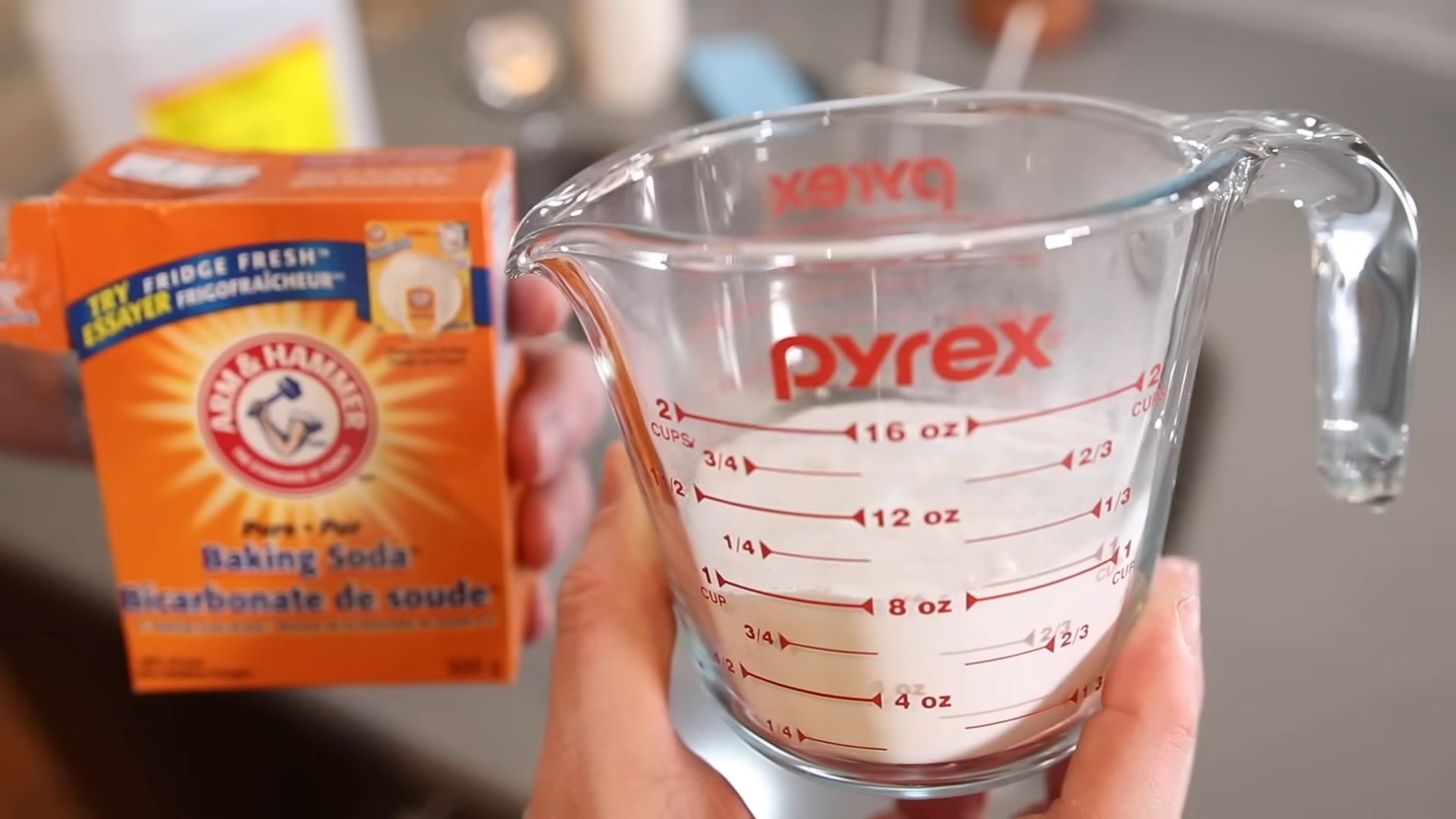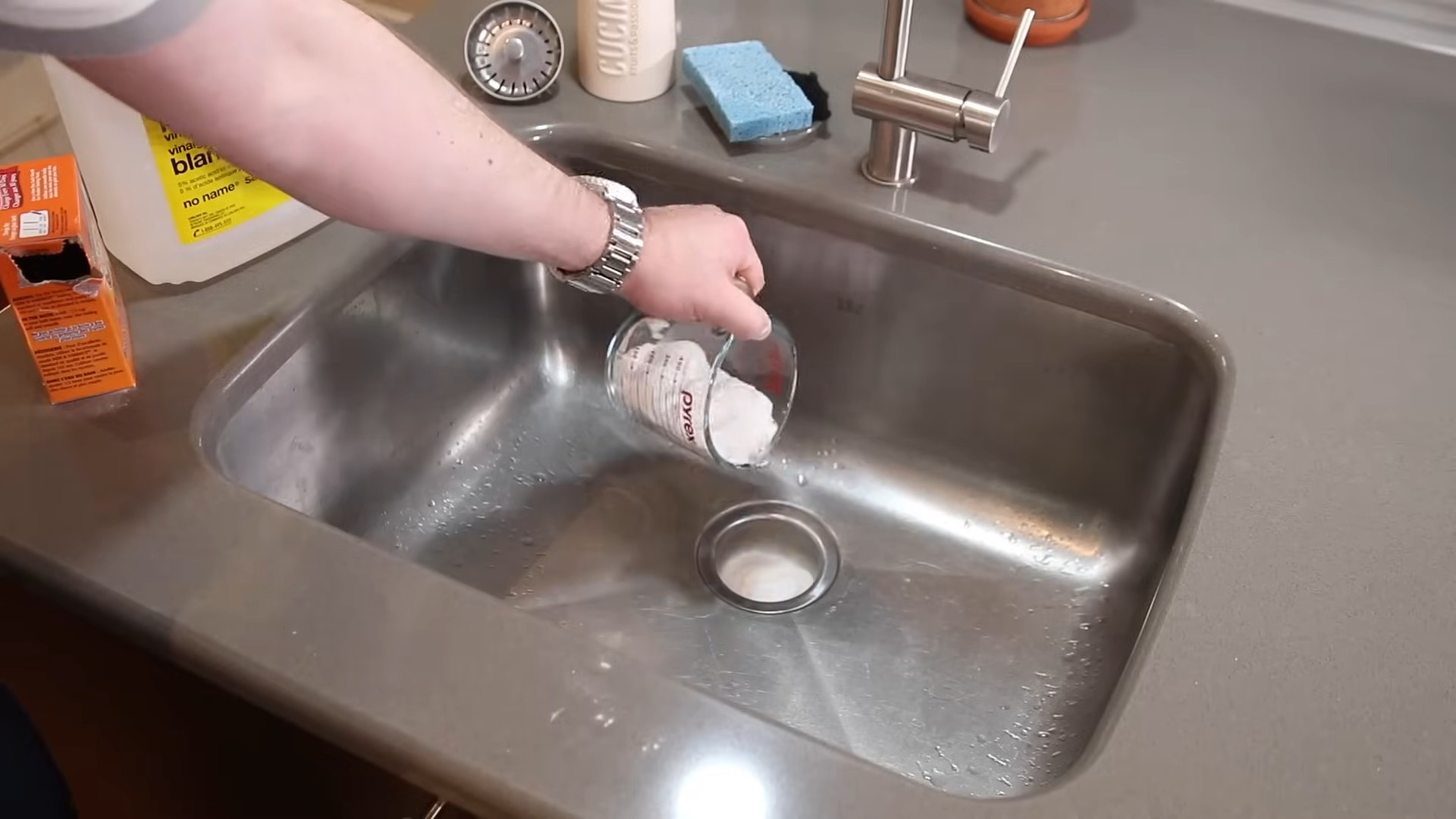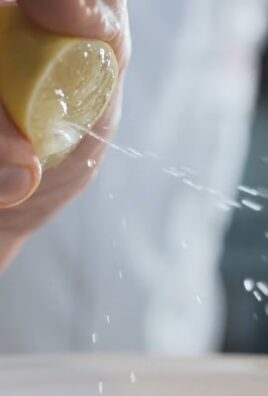DIY Drain Cleaner Baking Soda: Are you tired of slow-draining sinks and the nasty gurgling sounds coming from your pipes? I know I am! Before you reach for those harsh chemical drain cleaners, which can be harmful to your pipes and the environment, let’s explore a simple, effective, and budget-friendly solution using ingredients you probably already have in your kitchen: baking soda and vinegar.
The use of baking soda as a cleaning agent has a long and fascinating history. From ancient Egyptians using a naturally occurring form of baking soda called natron for cleaning and mummification, to its widespread use in modern households, this humble powder has proven its versatility time and again. It’s a testament to the power of simple, natural solutions!
But why should you bother with a DIY drain cleaner baking soda solution when there are so many commercial products available? Well, for starters, it’s incredibly cost-effective. Those store-bought drain cleaners can be expensive, and often contain harsh chemicals that can damage your plumbing over time. Plus, many of us are becoming more conscious of the environmental impact of the products we use. This DIY method is a win-win: it’s gentle on your pipes, tough on clogs, and easy on your wallet. I’m going to show you how to create a powerful, natural drain cleaner that will leave your drains flowing freely and your conscience clear!

DIY Drain Cleaner: Baking Soda & Vinegar Power!
Hey everyone! Clogged drains are the absolute worst, right? And those commercial drain cleaners are so harsh and expensive. I’ve got a super simple, eco-friendly, and budget-friendly solution for you: baking soda and vinegar! This method has saved me countless plumbing bills, and I’m excited to share it with you.
What You’ll Need
Before we dive in, let’s gather our supplies. This is a pretty minimal list, which is one of the things I love about this DIY drain cleaner.
* Baking Soda: The star of the show! You’ll need about one cup.
* White Vinegar: The bubbly activator! Again, about one cup.
* Hot Water: Not boiling, but nice and hot from the tap.
* Measuring Cup: For accurate pouring.
* Kettle or Pot: To heat the water.
* Rubber Gloves (Optional): Just in case you’re sensitive to vinegar.
* Plunger (Optional): For stubborn clogs.
* Old Rag or Paper Towels: For any spills.
How it Works: The Science Behind the Fizz
Okay, so why does this baking soda and vinegar combo work so well? It’s all about a simple chemical reaction. Baking soda (sodium bicarbonate) is a base, and vinegar (acetic acid) is an acid. When they mix, they create carbon dioxide gas. This fizzing action helps to loosen and break down the gunk that’s clogging your drain. The hot water then helps to flush everything away. It’s a powerful, natural cleaning process!
Step-by-Step Guide to Unclogging Your Drain
Alright, let’s get down to business! Follow these steps carefully, and you’ll be amazed at how well this works.
1. Clear the Area: Remove any standing water from the sink or tub. If there’s a lot of water, you might need to bail it out with a cup or small container. You want the baking soda and vinegar to directly target the clog, not just sit on top of water.
2. Pour in the Baking Soda: Carefully pour about one cup of baking soda down the drain. Try to get as much of it down the drain as possible. A funnel can be helpful here if you have one. Don’t worry if a little bit spills; just wipe it up.
3. Add the Vinegar: Now, slowly pour one cup of white vinegar down the drain, right after the baking soda. You should immediately see and hear the fizzing action. This is the magic happening!
4. Let it Fizz: Let the baking soda and vinegar mixture fizz and bubble for at least 30 minutes. I usually let it sit for an hour or even longer for really stubborn clogs. The longer it sits, the more time it has to break down the clog. You can even plug the drain with an old rag to keep the fizzing action contained within the pipes.
5. Flush with Hot Water: After the waiting period, carefully pour a kettle or pot of hot (but not boiling!) water down the drain. The hot water helps to flush away the loosened debris.
6. Repeat if Necessary: If the drain is still clogged after the first attempt, repeat the process. Sometimes it takes a couple of tries to completely clear a stubborn clog.
7. Plunge if Needed: If the baking soda and vinegar treatment doesn’t completely clear the clog, try using a plunger. The plunging action can help to dislodge any remaining debris. Make sure there’s enough water in the sink or tub to cover the cup of the plunger.
8. Prevention is Key: To prevent future clogs, try to avoid pouring grease, oil, or food scraps down the drain. You can also install a drain strainer to catch hair and other debris.
Dealing with Stubborn Clogs
Sometimes, even the baking soda and vinegar power combo isn’t enough to tackle a really stubborn clog. Here are a few extra tips and tricks to try:
* Boiling Water: If hot tap water doesn’t do the trick, try using boiling water. Be careful when pouring boiling water, as it can damage some types of pipes, especially PVC pipes. If you’re unsure about your pipes, stick with hot tap water.
* Baking Soda and Salt: For an extra boost, try mixing baking soda with salt before adding the vinegar. The salt acts as an abrasive, helping to scrub away the clog. Use about 1/2 cup of baking soda and 1/2 cup of salt.
* Wire Coat Hanger: If you suspect the clog is caused by hair or other solid debris, try using a straightened wire coat hanger to fish it out. Be careful not to damage the pipes. Bend a small hook at the end of the hanger and gently probe around in the drain.
* Enzyme Drain Cleaner: If all else fails, you can try using an enzyme drain cleaner. These cleaners use enzymes to break down organic matter, and they’re generally safer for your pipes than chemical drain cleaners.
* Call a Plumber: If you’ve tried everything and the drain is still clogged, it’s time to call a professional plumber. They have the tools and expertise to handle even the most stubborn clogs.
Safety First!
While baking soda and vinegar are generally safe, it’s always a good idea to take a few precautions:
* Wear Gloves: If you have sensitive skin, wear rubber gloves to protect your hands from the vinegar.
* Avoid Mixing with Other Cleaners: Never mix baking soda and vinegar with other drain cleaners, especially chemical drain cleaners. This can create dangerous fumes.
* Ventilation: Make sure the area is well-ventilated when using baking soda and vinegar.
* Eye Protection: Wear eye protection if you’re concerned about splashes.
Why I Love This Method
I’m a huge fan of this DIY drain cleaner for so many reasons:
* It’s Eco-Friendly: Baking soda and vinegar are natural and biodegradable, so they’re much better for the environment than harsh chemical drain cleaners.
* It’s Budget-Friendly: Baking soda and vinegar are inexpensive and readily available.
* It’s Effective: This method works surprisingly well on most common drain clogs.
* It’s Safe: Baking soda and vinegar are generally safe to use, as long as you follow the precautions.
* It’s Easy: This DIY drain cleaner is incredibly easy to make and use.
Troubleshooting Tips
* No Fizzing: If you don’t see any fizzing when you add the vinegar, it could be because the baking soda is old or the vinegar is weak. Try using fresh baking soda and vinegar.
* Still Clogged: If the drain is still clogged after several attempts, the clog may be too severe for this method. Try one of the other tips mentioned above, or call a plumber.
* Slow Drain: If the drain is draining slowly but not completely clogged, this method can still help to improve the flow.
Maintaining Clear Drains
Here are some tips to keep your drains flowing freely:
* Use Drain Strainers: Install drain strainers in all of your sinks and tubs to catch hair and other debris.
* Flush with Hot Water Regularly: Flush your drains with hot water every week or so to help prevent buildup.
* Avoid Pouring Grease Down the Drain: Never pour grease or oil down the drain. It can solidify and cause clogs.
* Dispose of Food Scraps Properly: Dispose of food scraps in the trash or compost bin, not down the drain.
* Consider Enzyme Drain Cleaners: Use an enzyme drain cleaner periodically to help break down organic matter.
I hope this guide helps you conquer those pesky clogged drains! Let me know in the comments if you have any questions or if you’ve tried this method and how it worked for you. Happy unclogging!

Conclusion
So, there you have it! Ditching the harsh chemicals and embracing this simple, effective DIY drain cleaner baking soda solution is a game-changer for your home. Not only is it incredibly cost-effective, saving you money on expensive commercial drain cleaners, but it’s also significantly better for the environment and your health. No more breathing in noxious fumes or worrying about corrosive chemicals damaging your pipes.
This isn’t just a quick fix; it’s a proactive approach to maintaining healthy drains. Regular use of this baking soda and vinegar method can prevent clogs from forming in the first place, saving you from future plumbing headaches and costly repairs. Think of it as a weekly spa treatment for your pipes, keeping them clear and flowing smoothly.
But the beauty of this DIY solution lies in its adaptability. Feeling adventurous? Try adding a few drops of your favorite essential oil, like tea tree or eucalyptus, for an extra boost of antibacterial power and a refreshing scent. For particularly stubborn clogs, you can increase the amount of baking soda and vinegar used, or even let the mixture sit overnight before flushing with hot water. Some people swear by adding a cup of salt to the baking soda before pouring it down the drain for an extra abrasive cleaning action. Experiment and find what works best for your specific plumbing system and the types of clogs you typically encounter.
We understand that switching to a DIY approach can sometimes feel daunting, but trust us, this is one trick you won’t regret trying. It’s simple, safe, and incredibly effective. Plus, you likely already have the ingredients in your pantry!
We wholeheartedly encourage you to give this DIY drain cleaner baking soda method a try. Say goodbye to harsh chemicals and hello to a cleaner, healthier home. Once you’ve experienced the satisfaction of unclogging your drains with this simple solution, we’re confident you’ll be a convert.
Don’t just take our word for it – try it out and see the results for yourself! And most importantly, we want to hear about your experience. Share your tips, variations, and success stories in the comments below. Let’s build a community of DIY drain cleaning experts and help each other keep our homes running smoothly, naturally. Your feedback will not only help others but also inspire us to continue sharing valuable DIY solutions. So, grab your baking soda, vinegar, and get ready to say goodbye to clogged drains the natural way!
Frequently Asked Questions (FAQs)
What exactly makes baking soda and vinegar such an effective drain cleaner?
The magic lies in the chemical reaction between baking soda (sodium bicarbonate) and vinegar (acetic acid). When combined, they create carbon dioxide gas. This fizzing action helps to loosen and break down the buildup of grease, hair, soap scum, and other debris that commonly cause drain clogs. The pressure from the gas helps to push the clog further down the drain or break it apart, allowing it to be flushed away with hot water. While it’s not as powerful as some commercial drain cleaners, it’s a much safer and gentler alternative, especially for older pipes.
How often should I use this DIY drain cleaner baking soda method to prevent clogs?
For preventative maintenance, we recommend using this method about once a month. Regular use will help prevent the buildup of debris and keep your drains flowing freely. If you notice your drains are draining slower than usual, you can increase the frequency to once a week until the problem is resolved. Remember, prevention is key!
Is this DIY drain cleaner safe for all types of pipes?
Generally, yes, this method is safe for most types of pipes, including PVC, copper, and older metal pipes. However, if you have very old or fragile pipes, it’s always a good idea to test a small amount of the mixture in an inconspicuous area first to ensure it doesn’t cause any damage. Avoid using this method on pipes that are already severely corroded or damaged. If you are unsure about the condition of your pipes, consult a plumber before using any drain cleaner, DIY or commercial.
What if the clog is really stubborn and the baking soda and vinegar method doesn’t work?
If the clog persists after trying the baking soda and vinegar method a few times, there are a few things you can try. First, make sure you’re using enough baking soda and vinegar. You can try increasing the amounts to one cup of each. Second, let the mixture sit for a longer period of time, even overnight, before flushing with hot water. If that still doesn’t work, you can try using a plunger to help dislodge the clog. A drain snake or auger can also be effective for breaking up or removing stubborn clogs. As a last resort, you may need to call a professional plumber.
Can I use boiling water instead of hot tap water?
While hot water is recommended, boiling water can sometimes be too harsh for certain types of pipes, especially PVC. Boiling water can soften or even melt PVC pipes, leading to damage and leaks. It’s best to stick to hot tap water, which is hot enough to help dissolve the clog without posing a risk to your pipes.
Does the type of vinegar matter? Can I use apple cider vinegar instead of white vinegar?
White vinegar is generally recommended for this DIY drain cleaner because it has a higher acidity level than other types of vinegar, making it more effective at breaking down clogs. While apple cider vinegar can be used in a pinch, it may not be as effective.
Can I use this method to clean my toilet bowl?
While baking soda and vinegar can be used to clean a toilet bowl, it’s not as effective for unclogging a toilet drain as it is for sink and shower drains. The toilet drain is typically larger and requires more force to dislodge clogs. For toilet clogs, a plunger is usually the most effective solution.
What are some other natural ways to prevent drain clogs?
Besides using the baking soda and vinegar method regularly, there are several other things you can do to prevent drain clogs. Avoid pouring grease down the drain. Use drain screens to catch hair and other debris. Flush drains with hot water after each use. Avoid flushing non-flushable items down the toilet, such as feminine hygiene products, wipes, and paper towels. Regularly clean your drain stoppers and traps to remove any accumulated debris.
Is there anything I should absolutely NOT mix with baking soda and vinegar when cleaning drains?
Absolutely! Never mix baking soda and vinegar with commercial drain cleaners. The combination can create dangerous fumes and potentially explosive reactions. Always use caution when working with any cleaning products, and never mix different chemicals together unless specifically instructed to do so. Safety first!
What if I have a septic system? Is this DIY drain cleaner still safe to use?
Yes, the DIY drain cleaner baking soda and vinegar method is generally considered safe for septic systems. Unlike harsh chemical drain cleaners, baking soda and vinegar won’t kill the beneficial bacteria that are essential for the proper functioning of your septic system. However, it’s always a good idea to use this method in moderation and avoid using excessive amounts of baking soda or vinegar. If you have any concerns about your septic system, consult a professional before using any drain cleaner, DIY or commercial.





Leave a Comment